A pair of identical, enigmatic lead objects were found partly buried in the seabed some 10m to the east of the stern of Colossus. It was difficult to ascribe a function to these objects on an eighteenth century warship. After consultation with Historic England, it was decided to recover them to allow further investigation.
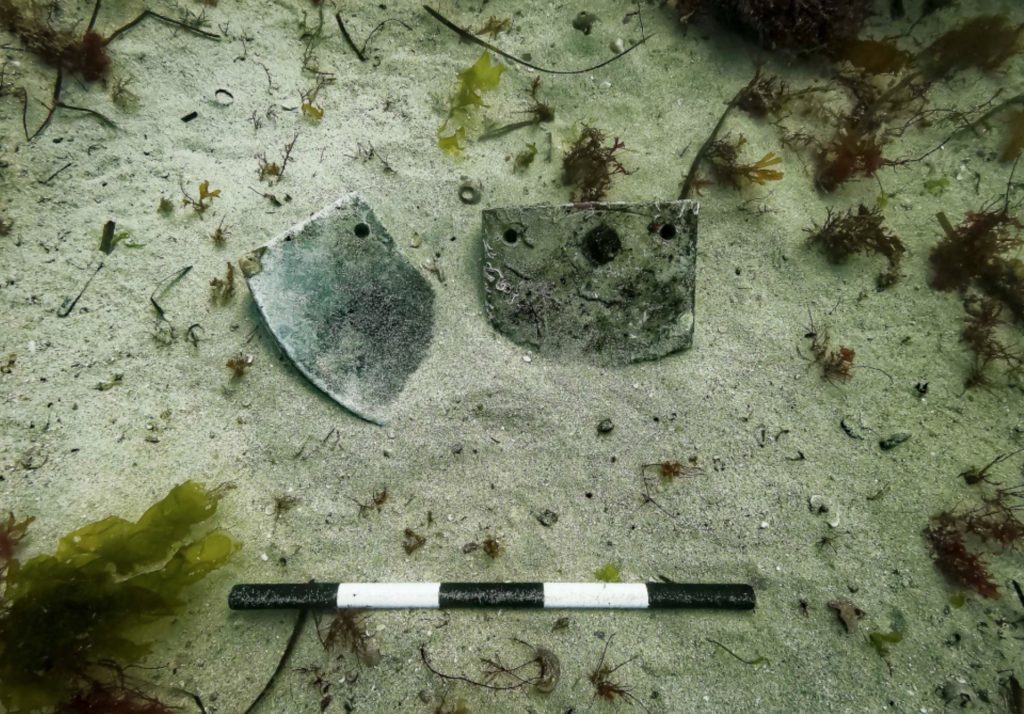
Scale = 0.5m
The lead objects appeared to be weights. Each has two holes of 15mm (1/2 inch) diameter running through the thickness of the weights, presumably for attachment. Each weighs about 24.5kg (54lb). The superficial similarity to modern scuba diving weights prompted the speculation that these might have been connected with early salvage diving on the site of Colossus. We know of at least two successful early salvage divers who worked on the wreck of Colossus; the first of these was Ralph Tonkin of Penzance. The following account is from the Sherbourne Mercury of 25th March 1805 (but listed as port news for Torbay on the 20th March 1805).
This day arrived the sloop DANIEL, Captain Richard Duff, from the Island of Scilly, by an order from His Majesty’s Board of Ordnance, to take up the guns and the remaining part of the wreck of his Majesty’s ship VENERABLE, under the direction of Mr. Ralph Tonkin, of Penzance, and are the same crew who took up the guns and the stores of his Majesty’s ship COLOSSUS, wrecked on Scilly Rocks a few years since.
Sherbourne Mercury of 25th March 1805
Board of Ordnance records dated August 1799 attest to his success, stating that ‘Messrs Tomkins & Co’ were paid £479/9s/11d for the recovery of 37 iron guns (36 of which were deemed serviceable). Details of Mr Tonkin’s diving apparatus survive in a print he had made of his salvage operations on the wreck of the Abergavenny in September 1805. This shows his apparatus to consist of a small copper ‘bell’ worn over the upper torso with arm holes sealed with leather tubes. The bell is shown weighted with a band of lead around the lower edge. The print does not show enough detail to see clearly what form the lead takes, but this does not appear to be an obvious match for the lead objects found on Colossus.
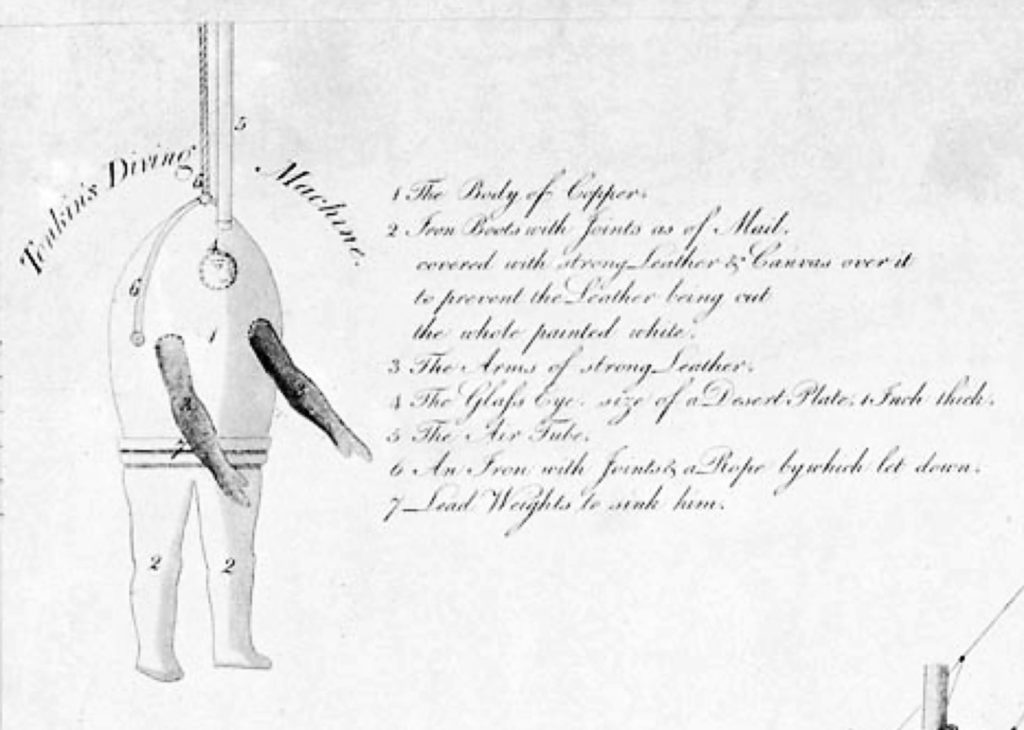
Internet image (search Tonkins Diving Machine)
In 1833 the renowned salvage diver John Deane visited Scilly and dived on the wrecks of Colossus and the brig Hope(carrying ivory and gold dust). Deane was accompanied by another diver, William Edwards. We are told that ‘After an uneventful passage to the Scilly Isles, John searched for and quickly found the wreck of Colossus’. He recovered a number of iron guns from Colossus as well as 17 cwt of copper sheathing.
Intriguingly, they also suffered an unusual and somewhat incredible accident – reported in the Hampshire Telegraph of November 4th 1833:
It is now thirty-five years since his Majesty’s ship Colossus was wrecked in St Mary’s Roads, Scilly. A few weeks since, two young men (brothers) were there with a diving apparatus of a new construction, and succeeded in bringing-up several pieces of cannon, &c. from the wreck. The following extraordinary fact merits investigation: one of the guns exploded on being struck with a hammer, while lying near St. Mary’s quay, and the wadding &c. fell on Rat Island. Master-Gunner Ross was severely injured in the leg by the accident.
Hampshire Telegraph, November 4th 1833
It is hard to believe that a charge of black powder would remain dry and viable after immersion in 15m of seawater for 35 years. One possible explanation is that they thought the gun was in such good condition that they would try it with a charge of powder – which would also explain the presence of ‘Master-gunner Ross’. Whatever the truth of this strange event, it is clear that they did raise a number of guns from Colossus, and even made illustrations of some of them.
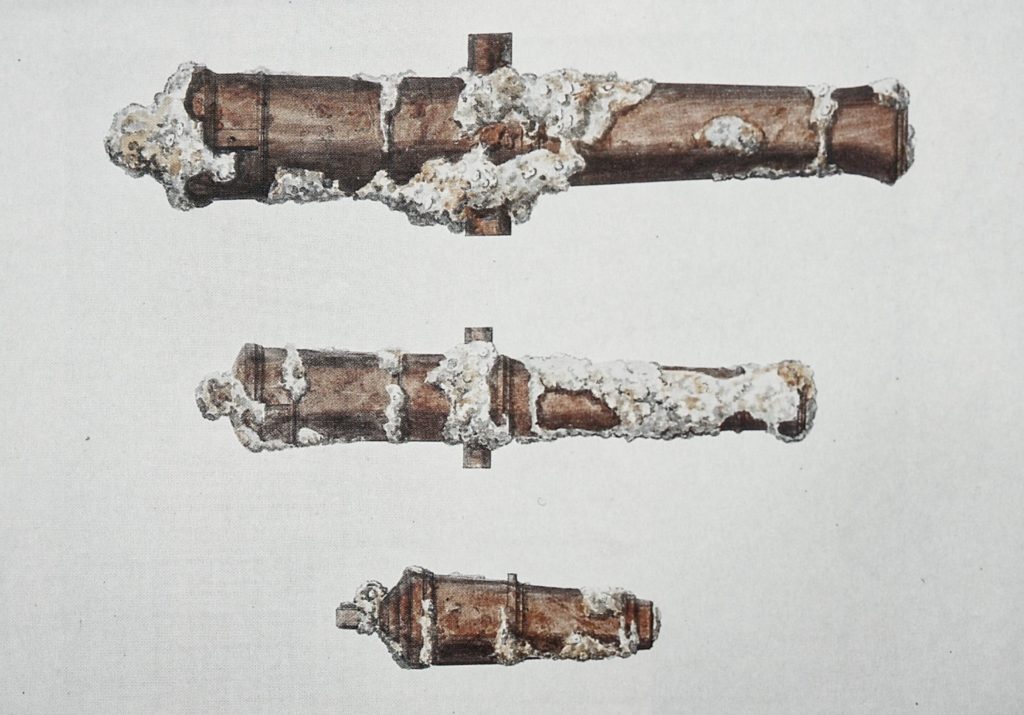
Illustrations of the Deanes’ diving equipment clearly show the diver with two lead weights of exactly the same shape as those recovered from the wreck. Furthermore, a description of their diving equipment in the Berwick Advertiser, May 1840(quoted in The Infernal Diver pp165-6) states that the diver was weighted with ‘Two pieces of lead, of one half cwt each’ – this being 56lb it is remarkably close to the 54lb weight of our recovered lead objects.
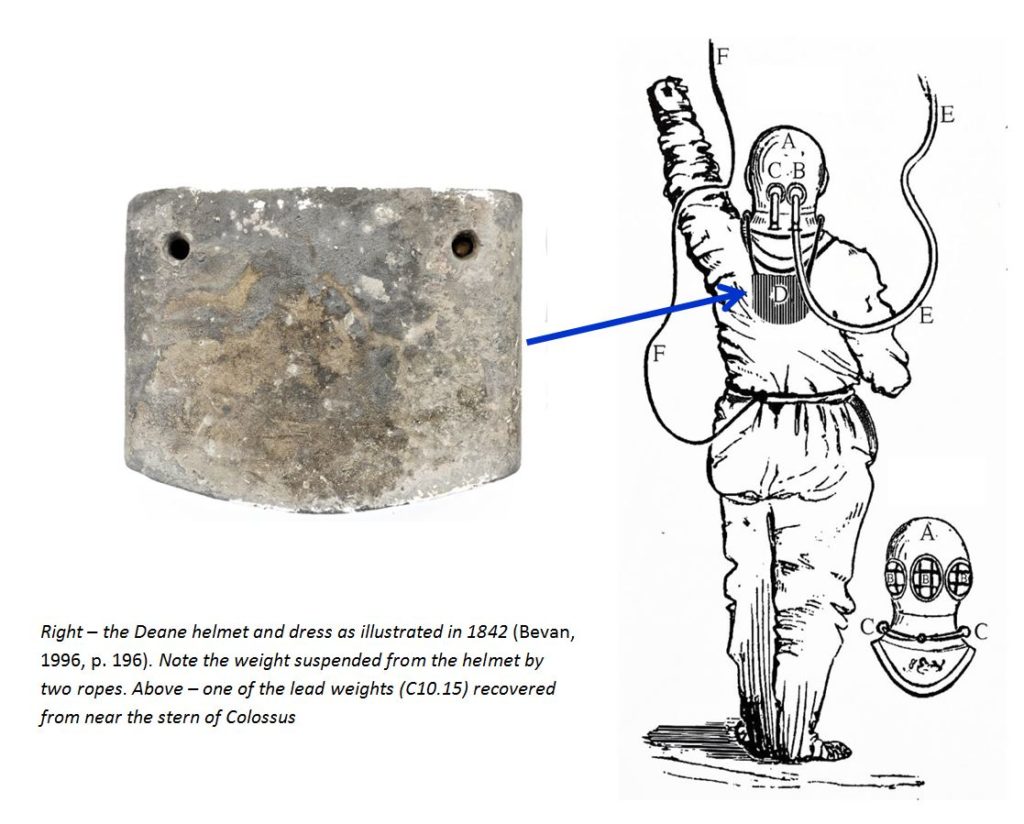
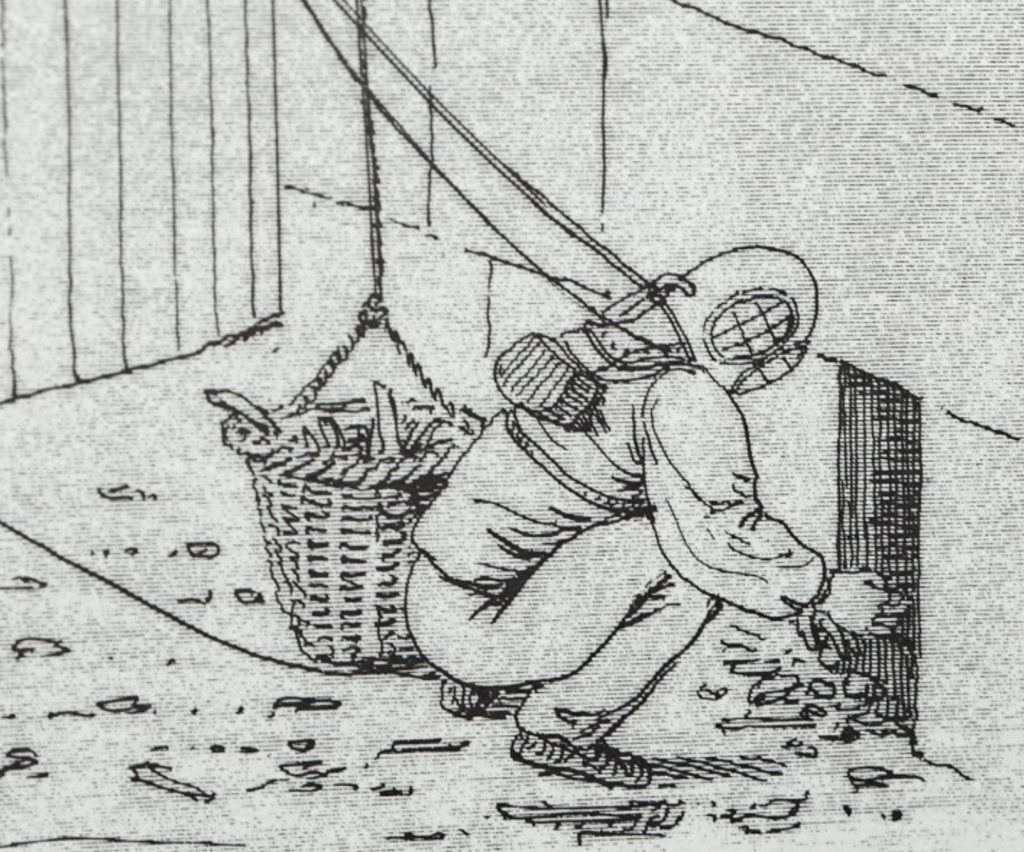
Note the weight on the diver’s back – the same shape as those found on Colossus.

The case for the identification of C10.15 as the Deanes’ dive weights can be made as follows. Firstly, they are shaped just like the Deane weights shown in contemporary illustrations – down to details such as curve, convex bottom and rope-hole positions. The mass is almost the same as that stated for the Deane weights; there are exactly the right number, two; and lastly we know that the Deanes were there in 1833 and recovered guns and copper from Colossus.
Given the similarity of form, mass, material and quantity it seems reasonable to postulate that these weights were lost or jettisoned by the Deanes while salvage diving on the wreck of Colossus in 1833. This is important and portentous. We have always known that salvage divers worked on the wreck of Colossus – but we have never known upon which of the two wreck sites (Roland Morris’ bow site or the 2001 stern site) these operations occurred. That the Deanes arrived in 1833 and quickly found the site suggests that they were informed where to look by those who had witnessed the wreck. This strongly suggests that the wreck site of Colossus was perceived as where the stern lies now (and where the Deanes’ weights were found) and not where Roland Morris found pottery and scattered iron guns. This not only corroborates the wrecking theory proposed in 2017 (Camidge, 2017) it also explains the mystery of the missing guns on the stern site – they were salvaged by Tonkin (1799) and the Deanes (1833). The only guns left on the stern site were those partly buried in the seabed (Guns 1 to 6). At last the oft-repeated perception that Colossuswas wrecked on Southard Well Reef, near to the site salvaged by Roland Morris, can be convincingly challenged.